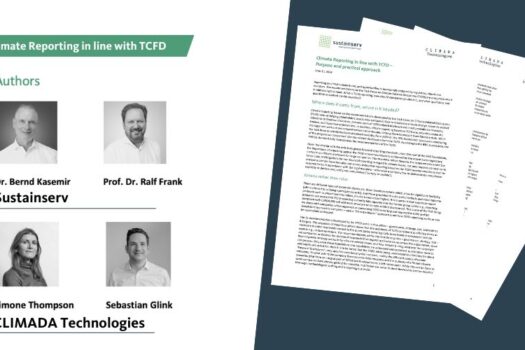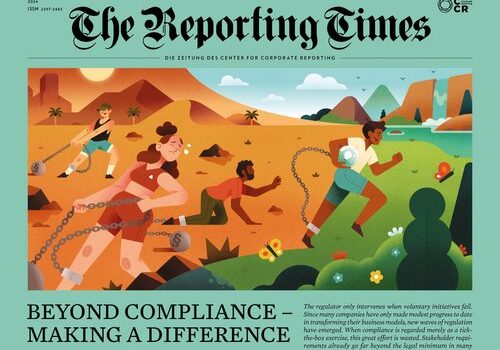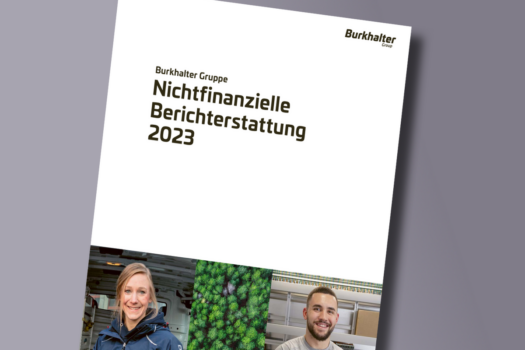With the climate agreement of Paris 2015, climate issues have appeared on the radar of many Swiss companies and since then have increasingly found their way into reporting. Many companies are therefore currently busy developing basic data for a carbon footprint. But already stakeholders are calling for more extensive “climate reporting 2.0”. Learn how Dufry has addressed this with TCFD and SBTi.
Climate reporting requirements are evolving rapidly: investors, analysts, customers, and legislators now expect much more comprehensive climate reporting than just CO2 -balances: a kind of “climate reporting 2.0”. This should include ambitious targets, governance on climate issues, and climate scenarios to assess financial risks.
The new demands on companies have a lot to do with the principle of “double materiality”. This maps the embedding of a company in its environment: On the one hand, the company has an impact on the environment and society (“inside-out”) and contributes to effects such as climate change. On the other hand, these effects impact the company (“outside-in”). Two standards have been established to reflect these two sides in climate reporting: the guidelines of the Science-Based Targets Initiative (SBTi) for “inside-out” and the framework of the Task Force on Climate-Related Financial Disclosures (TCFD) for “outside-in”.
SBTi with far-reaching requirements
Science-based targets (SBTs) are corporate climate goals aligned with the latest scientific consensus and the Paris Agreement on climate change. In place of arbitrary goals such as “25% less emissions by 2025,” SBTs provide a meaningful and comprehensible rationale.
Read more on what SBTs are why your company needs one here.
Those wishing to implement the SBTi guidelines face numerous challenges. Two of them are particularly important: First, the reduction targets are based on the targets for a “1.5 degree world” and thus often go far beyond what companies used to set themselves as “plausible reduction targets”. Second, the SBT approach forces companies to take responsibility beyond themselves throughout the value chain. This aspect is central for companies with significant Scope 3 emissions. This is also the case for Dufry as an international travel retailer. With a contribution of around 90%, Dufry’s emmissions are dominated by the purchase of products. The company has no influence on how the products are manufactured.
In its own operations (Scopes 1 and 2), Dufry must reduce CO2 emissions by over 90% by 2030 compared to 2019, according to SBT guidelines. As Dufry’s stores are integrated into airport structures worldwide, this will be achieved – in addition to an energy-efficient design of the stores – with the support of a centrally organized procurement of renewable electricity by means of certificates recognized by the SBTi. Dufry aims to meet this ready for all electricity by 2025.
For Scope 3 emissions, Dufry’s best solution is a Supplier Engagement Program. This aims to ensure that at least 74% of suppliers – the proportion is calculated based on emissions – have SBT commitments by 2027. This far-reaching target is realistic at Dufry, as many of the suppliers are themselves exposed due to prominent branded products.
Dufry’s targets and associated solution approaches were successfully validated by SBTi in early 2023.
TCFD as a new way of sustainable thinking
The Task Force on Climate-related Financial Disclosures, better known as the TCFD, is an initiative launched in December 2015 by the FSB (Financial Stability Board), an international body founded, with support from G20 members, to promote international financial stability. The purpose of the TCFD is “to help identify the information needed by investors, lenders, and insurance underwriters to appropriately assess and price climate-related risks and opportunities,” 1 and “to make recommendations for consistent company disclosures that will help financial market participants understand their climate-related risks.”
More on TCFD and why it is important here.
TCFD calls for the integration of climate issues into governance, strategy, and risk management. In doing so, TCFD is based on the assumption that climate-related impacts have impacts that should be monetized and that these impacts need to be managed.
Implementing the TCFD requirements first means conducting an inventory. Dufry has worked on various issues in this regard and published answers in an initial TCFD report:
- How do climate-related topics get onto the management agenda at Dufry?
- In what way does Dufry’s risk management deal with climate risks?
- What targets can Dufry set for itself and how is their achievement measured?
TCFD encourages companies to develop climate-related futures first through qualitative scenarios, and only later to model quantitative scenarios. Comparable to the SBT process, it is about trimming the organization to climate-related aspects of doing business and building know-how.
If, like Dufry, you want to drive the implementation of SBT and TCFD in parallel – which makes perfect sense because of the synergies – you could set the following milestones:
- Analyze business model and value chain: What is the CO2 profile? Where are the climate risks?
- Collect data and know the starting position: Collect data for CO2 emissions of the entire value chain and estimate climate risks.
- Develop goals and measures: Establish dialogues with various corporate functions.
- Validate and report: Conduct validation by SBTi and prepare TCFD report.
Companies are well advised to start preparatory work for comprehensive “Climate Reporting 2.0” already in the current year.
This article was first published by Renzo Radice, Global Corporate Communications & Public Affairs Head at Dufry, Dr. Stephan Lienin, Managing Partner Sustainserv, and Prof. Dr. Ralf Frank, Managing Director Sustainserv Germany in The Reporting Times of the Center for Corporate Reporting.
Get in touch. We are happy to tell you more about it.






